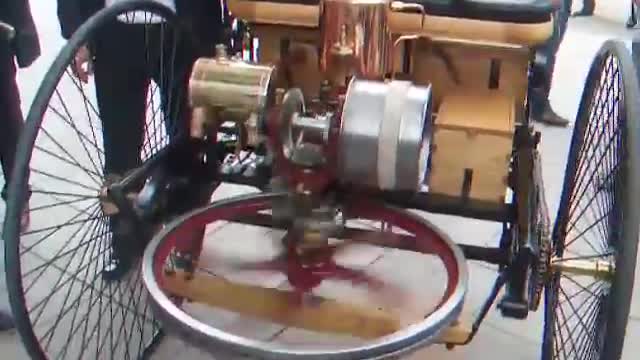Premium Only Content

The first car ever running live!. The Benz Motorwagen 1885! Still Working
After developing a successful gas-powered two-stroke piston engine in 1873, Karl Benz focused on developing a motorized vehicle. His Patent Motorwagen (or Motor Car), introduced in 1886, is widely regarded as the first purpose-built automobile, that is a vehicle designed from the ground up to be motorized. Benz unveiled it officially on July 3, 1886 on the Ringstraße in Mannheim, Germany. The vehicle was patented with German patent number 37435, which Benz applied for on January 29, 1886.
After developing a successful gasoline-powered two-stroke piston engine in 1873, Benz focused on developing a motorized vehicle while maintaining a career as a designer and manufacturer of stationary engines and their associated parts.
The Benz Patent-Motorwagen was a three-wheeled automobile with a rear-mounted engine. The vehicle contained many new inventions. It was constructed of steel tubing with woodwork panels. The steel-spoked wheels and solid rubber tires were Benz's own design. Steering was by way of a toothed rack that pivoted the unsprung front wheel. Fully elliptic springs were used at the back along with a beam axle and chain drive on both sides. A simple belt system served as a single-speed transmission, varying torque between an open disc and drive disc.
Bertha Benz, Karl's wife, whose dowry financed their enterprise, was aware of the need for publicity. She took the Patent-Motorwagen No. 3, supposedly without her husband's knowledge, and drove it on the first long-distance automobile road trip to demonstrate its feasibility. That trip occurred in early August 1888, as the entrepreneurial lady took her sons Eugen and Richard, fifteen and fourteen years old, respectively, on a ride from Mannheim through Heidelberg, and Wiesloch, to her maternal hometown of Pforzheim.
The first stationary gasoline engine developed by Carl Benz was a one-cylinder two-stroke unit which ran for the first time on New Year’s Eve 1879. Benz had so much commercial success with this engine that he was able to devote more time to his dream of creating a lightweight car powered by a gasoline engine, in which the chassis and engine formed a single unit.
The major features of the two-seater vehicle, which was completed in 1885, were the compact high-speed single-cylinder four-stroke engine installed horizontally at the rear, the tubular steel frame, the differential and three wire-spoked wheels. The engine output was 0.75 hp (0.55 kW). Details included an automatic intake slide, a controlled exhaust valve, high-voltage electrical vibrator ignition with spark plug, and water/thermo siphon evaporation cooling.
-
 1:51
1:51
KJRH
6 years agoUSDA still working
11 -
 0:45
0:45
KMGH
6 years agoCrews still working in Clear Creek Canyon
9 -
 2:46
2:46
WCPO
6 years agoPolice still working to determine motive in Dayton shooting
33 -
 1:56
1:56
WXYZ
6 years agoFirst responders working through dangerous cold
-
 0:42
0:42
KMGH
6 years agoPueblo working on a plan to keep animal services running
2 -
 0:44
0:44
KGTV
6 years agoWorld's first running music festival hits Del Mar
14 -
 1:35
1:35
KGUN
6 years agoADOT still working on deciding Interstate 11 corridor
13 -
 1:21
1:21
KERO
6 years agoBlues win first ever Stanley Cup
22 -
 1:56
1:56
KERO
6 years agoBlues win first ever Stanley Cup
20 -
 1:59
1:59
KIVI
6 years agoFirst responders still respond on the holidays
1